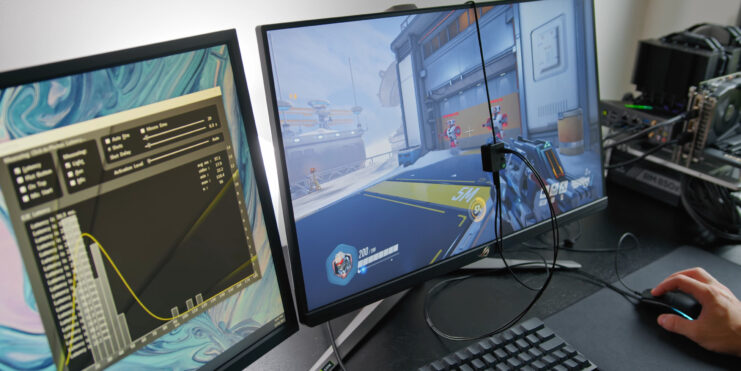In the fast-paced world of gaming and digital visuals, technologies that enhance the experience and performance are always in the spotlight.
Among these, G-Sync stands out as a notable innovation by NVIDIA aimed at providing gamers with a seamless, immersive experience.
But as technology evolves and new players enter the market, the question arises: Is G-Sync worth it in 2024?
In this post, I will explore this technology’s benefits, its place in the current market, and how it compares to other available options.
Key Takeaways
- G-Sync provides a premium, tear-free gaming experience but comes at a higher cost due to proprietary hardware.
- FreeSync and G-Sync Compatible monitors offer similar benefits at a more affordable price, making them attractive alternatives.
- The value of G-Sync in 2024 depends on individual gaming needs, budget, and whether you prioritize cutting-edge performance.
- Exploring and comparing G-Sync with other technologies is crucial for making an informed decision tailored to your gaming setup.
G-Sync In a Nutshell
G-Sync is a technology developed by NVIDIA that eliminates screen tearing and minimizes stuttering and input lag in games. It achieves this by synchronizing the monitor’s refresh rate with the graphics card’s frame rate.
Simply put, it ensures that each frame your computer generates is perfectly aligned with the moment your monitor is ready to display it, providing a smooth gaming experience.
Monitors equipped with G-Sync include a proprietary module specifically designed to communicate with compatible NVIDIA graphics cards.
This module enables variable refresh rates and overdrive settings, adjusting dynamically to the frame rate output by the GPU. The goal is to create a fluid and tear-free visual experience, particularly beneficial in fast-paced games where every millisecond counts.
The Benefits for Gaming
- Smooth, Tear-Free Gaming Experience: G-Sync effectively eliminates screen tearing, where the display shows pieces of multiple frames at once, by ensuring the monitor’s refresh rate matches the GPU’s frame rate.
- Reduced Input Lag: By synchronizing frame rates, G-Sync minimizes the delay between user input and what’s displayed on the screen, crucial for competitive gaming.
- Adaptive Overdrive: G-Sync monitors adjust the overdrive on the fly, reducing ghosting and artifacts as the scene changes.
Is G-Sync Worth It in 2024?
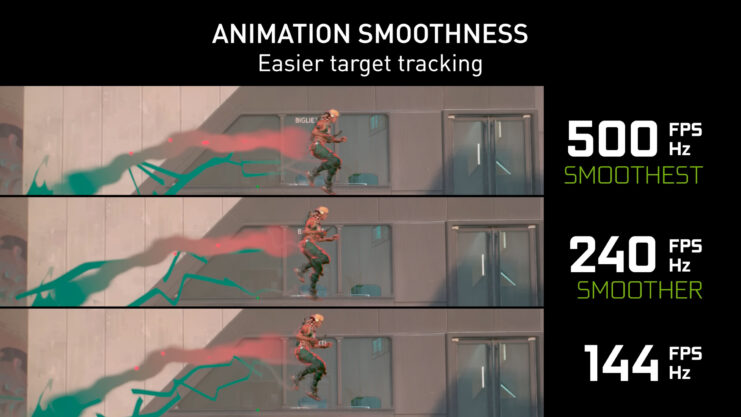
To answer this question, let’s examine the current state of G-Sync technology, its competition, and the overall market.
Current State
G-Sync displays come in various types, including Ultimate, Regular, and Compatible.
The Ultimate and Regular categories feature the proprietary G-Sync module, while G-Sync Compatible monitors use the open Adaptive-Sync standard but are certified by NVIDIA for a tear-free experience.
Despite their benefits, G-Sync monitors generally carry a higher price tag due to the proprietary hardware involved.
G-Sync vs. Other Technologies
- AMD FreeSync and G-Sync Compatible Monitors: These alternatives use Adaptive-Sync, a royalty-free protocol, to provide a variable refresh rate. While they offer a tear-free experience, they may have a narrower VRR range and less effective overdrive compared to G-Sync.
- Price Comparison: G-Sync displays are more expensive, but certain FreeSync or G-Sync Compatible models offer comparable performance at a lower cost.
- Performance and Compatibility: High-end G-Sync monitors may provide superior HDR image quality but at a significant price premium. Meanwhile, FreeSync monitors are more budget-friendly and still offer excellent performance.
Pros
- Superior synchronization technology for tear-free gameplay.
- Variable overdrive for optimal image quality without ghosting.
- Premium models offer excellent HDR quality.
Cons
- Higher cost due to proprietary hardware.
- Limited to NVIDIA graphics cards.
- FreeSync and G-Sync Compatible monitors offer similar benefits at a lower price.
Scenarios Where G-Sync Makes a Difference
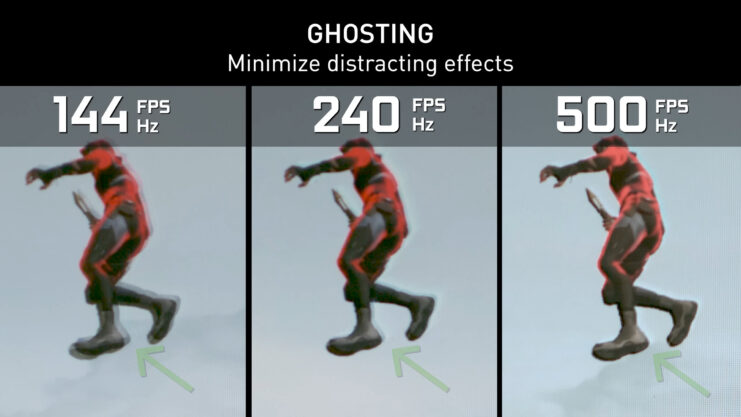
G-Sync shines in high-action games where every frame counts, such as first-person shooters, racing games, and competitive esports titles. It ensures a fluid experience without distractions from screen tearing or stuttering.
However, for budget or casual gaming, the cost may not justify the performance gains, especially with competitive alternatives available.
Main Points Summary
G-Sync offers undeniable benefits for gaming, including tear-free, smooth, and responsive gameplay. However, its higher cost and compatibility restrictions prompt a careful evaluation of its worth in 2024.
Gaming in 2024
The gaming world in 2024 is more diverse than ever, with a wide range of hardware and software options catering to different tastes and budgets.
In this environment, technologies like G-Sync play a crucial role in enhancing the visual experience, but they are part of a broader ecosystem where various factors interplay to define the ultimate gaming setup.
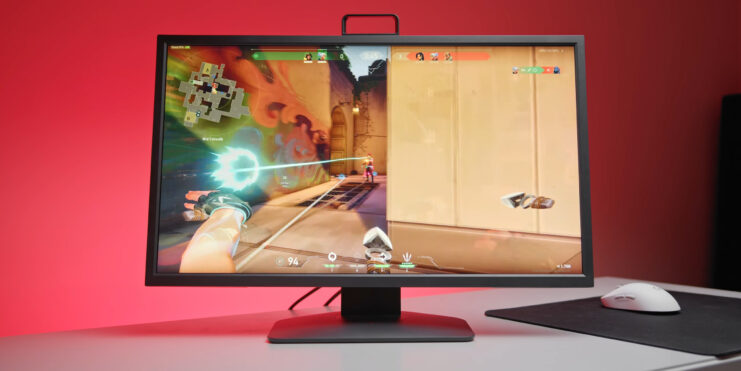
Beyond the Basics
While G-Sync’s core value proposition—synchronizing display refresh rates with GPU output to eliminate tearing and reduce stuttering—is straightforward, its implications for gaming immersion and competitive performance are profound.
High-stakes scenarios in competitive gaming, where split-second decisions can determine victory or defeat, highlight the importance of having a display technology that can keep up with the action without distracting artifacts.
The Cost-Benefit Analysis
The premium that comes with G-Sync-equipped monitors is a consideration that cannot be overlooked. For gamers for whom budget is a primary concern, the decision leans towards finding a balance between cost and performance.
The emergence of G-Sync Compatible monitors has partially bridged this gap, offering a middle ground where users can enjoy the benefits of adaptive synchronization without the full cost of G-Sync’s premium.
Is G-Sync Worth It?
The value of G-Sync in 2024 hinges on several factors: your budget, gaming preferences, PC configuration, and the importance of visual fidelity in your gaming experience.
While G-Sync provides a premium experience, FreeSync and G-Sync Compatible monitors present a more cost-effective solution without significant sacrifices in performance.
For gamers who demand the absolute best and are willing to pay for it, G-Sync remains a compelling choice.
However, for those looking to balance performance with cost, exploring FreeSync or G-Sync Compatible options is advisable.
Recommendations for Choosing a G-Sync Display
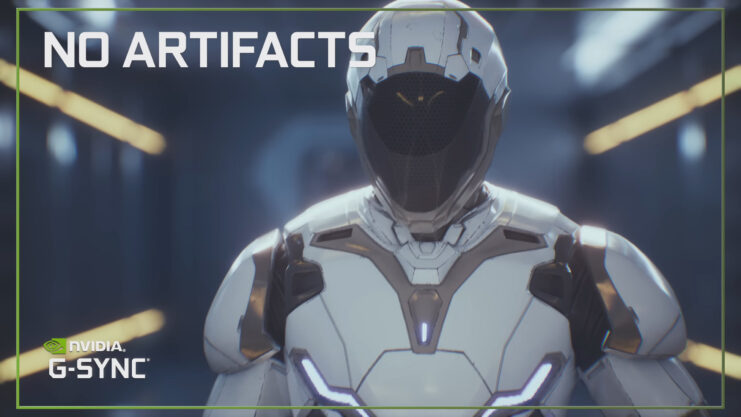
When considering a G-Sync monitor, weigh the following:
- Budget vs. Performance: Determine if the premium for G-Sync aligns with your performance expectations and gaming needs.
- PC Configuration: Ensure your NVIDIA graphics card can leverage the benefits of G-Sync.
- Monitor Specifications: Look beyond G-Sync. Consider resolution, refresh rate, and panel type to find the best match for your gaming style.
FAQs
Can I use a G-Sync monitor with an AMD graphics card?
No, this technology is designed to work exclusively with NVIDIA graphics cards. For AMD cards, FreeSync monitors are the compatible option.
Does G-Sync work over HDMI?
Traditionally, it requires a DisplayPort connection. However, some newer models and G-Sync Compatible monitors may support it over HDMI.
Is there a difference between G-Sync Ultimate and G-Sync Compatible monitors?
G-Sync Ultimate monitors offer the highest performance, including HDR support and low latency, while G-Sync Compatible monitors meet basic tear-free and stutter-reducing criteria without the proprietary module.
Can G-Sync and FreeSync monitors work with game consoles?
Yes, some game consoles support variable refresh rate (VRR) technologies. However, compatibility with G-Sync or FreeSync specifically depends on the console and the monitor’s capabilities.
Will enabling G-Sync impact my frame rate?
This technology itself does not lower your frame rate; it synchronizes the display’s refresh rate to your GPU’s frame output, optimizing the gaming experience without directly affecting performance.
Are all G-Sync monitors 4K?
No, these monitors come in a variety of resolutions, including 1080p, 1440p, and 4K. The choice of resolution depends on your preferences and gaming setup.
Concluding Thoughts
In 2024, G-Sync continues to represent the pinnacle of gaming display technology for those seeking uncompromised performance and who are willing to invest in it.
Yet, with the rise of competitive technologies like FreeSync, the decision is more nuanced, depending on personal priorities and budget constraints.

